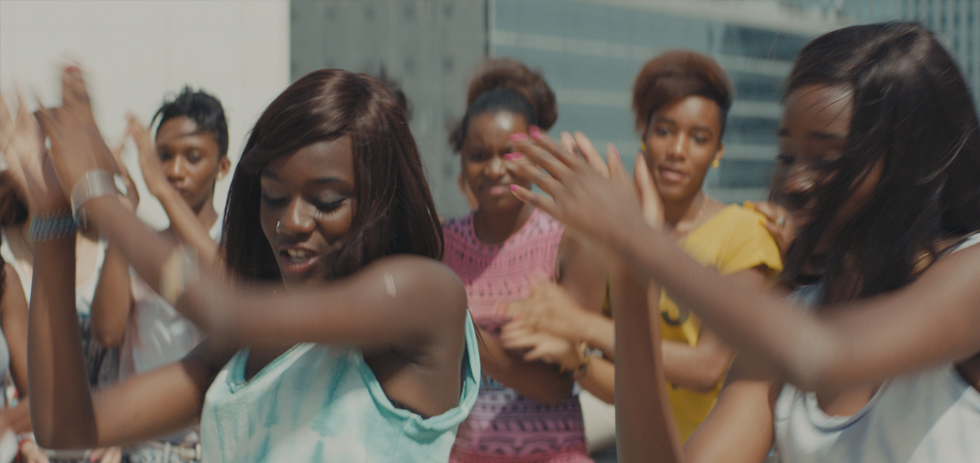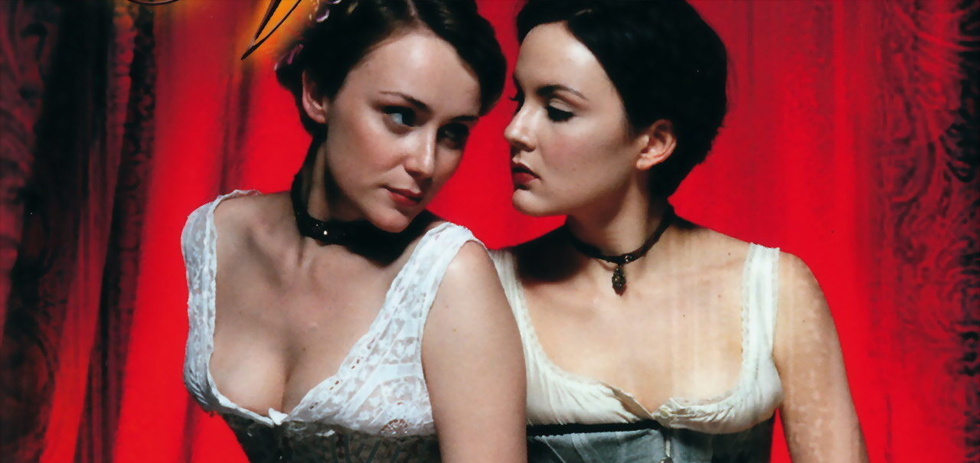The Reelout Queer Film festival had its first run out the back of Kingston, Ontario’s only gay bar. Sixteen years later the festival is thriving as one of Canada’s most dynamic spaces for contemporary LGBT film. We had a chat to festival director Matt Salton about this year’s programme, Canadian queer cinema and the evolution of queerness on screen.
Welcome and thank you for sitting down with us today. To start, which film are you most excited about in this year’s programme?
I’d have to say – I mean this year there are just so many great ones to choose from but I think my favourite overall is Girlhood. It’s a fantastic film, it’s beautiful to watch, it’s engaging, it’s absorbing, and it’s a queer film that we don’t see very often, in terms of representation of young black women coming of age. I think it fits well with our theme of looking at intersectionalities within the queer community. So I hope a lot of people go see it because it is one that won’t disappoint!
I actually wanted to ask you about Girlhood. It’s interesting to see that it’s in the programme despite not having explicit LGBT content, which comes as an exciting step for queer cinema. It validates a queer sensibility in filmmaking where there is an impulse to tell stories about identity but not necessarily always LGBT identities. Do you think the boundaries around what classifies a queer piece of art have loosened with the growing availability of LGBT media?
We’ve always looked at queer content not necessarily as subject but also as authorship. Celine [Sciamma] is a queer filmmaker and we’ve shown two of her features before. And the fact is that yes it is not overtly queer but there is still queer content in the film as she [the protagonist Vic] is questioning her sexuality. It hasn’t played at a lot of queer film festivals perhaps because the programmers have perceived it to not be a queer film. I think as queer film festival programmers, especially those of us who are white and/or cisgender, we have a responsibility to recognise that the queer community is a very diverse, disparate group. And that what I myself, as a white cisgender male, might not see as queer, a queer woman of colour might see as very queer; and that may be something that has nothing to do with sexual orientation on the nose.
Definitely. The programme in general is a real testament to how queer cinema has diversified beyond the standard cisgender gay coming out narrative. Quite a number of films in your programme deal with trans stories, including the opening night gala film In the Turn. Do you see this as representative of an increasing desire from audiences to hear voices that may have previously been drowned out in mainstream queer discourses?
Absolutely. I mean especially when we are talking about trans film we often see the same trans narrative told over and over again. I don’t think In the Turn is actually any different in that case. When we look at trans film there are two audiences. There are trans films for trans folk and there are trans films for cis audiences. And so we work to ensure that we are programming both. In the Turn is a different story in that we don’t usually hear a lot about trans youth, especially those who are supported by their families. And that is a lovely, refreshing story to see. But again it is one that transgender audiences may go, “Well, this is the same story we’ve seen over and over.” We are always looking for ‘pure’ trans film, and I guess I use the word ‘pure’ because I consider that as something that is made by trans-identified filmmakers for trans-identified audiences. For example the Buck Angel documentary Sexing the Trans Man – we showed that a few years ago and it was fantastic. Trans audiences are sick of seeing these narratives where usually someone comes out, they have a horrible life and then somewhere in there is talk of surgery, or they will actually go in and show the surgery, and it all seems a little bit exploitative.
It is certainly great to see films that aren’t following the tragedy tradition in which trans characters are always positioned as victims.
Exactly. In this year’s festival we have three that I can think of: In the Turn, which, yes, is tragic, but has a happy ending. We have the documentary on Kate Bornstein which is also quite sad but she is not a tragic figure at all. She’s uplifting, she’s empowering, she’s an icon. And then we have Boy Meets Girl which is a very sweet romantic comedy and lovely to see a transgender character actually played by a trans actress.

The festival in general has quite a youthful vibe, is there an effort to specifically reach queer and questioning teens?
Yes, actually, during Reelout 14 we played with the 14 as ‘for teens’. We had already discussed that we wanted to have an overarching theme on the camp aesthetic and how it is used in queer film. So we took this idea of ‘camp’ and for all our marketing posters we had our models dressed up as camp counsellors for Camp Reelout, which was a lot of fun. We’ve retained a lot of volunteers from that season. I think it is really important to not only attract those younger volunteers to keep the festival going but also to make sure that we are screening films by emerging filmmakers. There are very few places where young filmmakers can start to build their career, and festivals is one of them.
You yourself have worked extensively with film festivals both domestically and abroad. What would you say is really specific to the contemporary Canadian queer cinema landscape?
There’s not a whole lot of difference I think between queer and non-queer Canadian filmmaking; we are known for making strange films. One of the key characteristics of queer Canadian cinema is the video short. We see a lot of experimental work and the fact is the pie doesn’t get any bigger for funding for mainstream film. So if you want to be a video media artist here in Canada you’re really limited to DIY short works. And there are some amazing creative works out there. I feel like the most notable Canadian queer media artists will probably never make a feature film. They will never be a household name but are very well respected in the arts community. And that is why we feel it is very important to ensure that we present these artists to a mainstream queer crowd. All of our experimental works precede mainstream films. So even if someone hates experimental film too bad, they are going to sit through one if they want to see their mainstream queer film!
In general it seems that Reelout has retained a lot creative control to programme slightly more left-field films.
Well I mean we are Kingston. We have a population of a hundred thousand and are sandwiched between three major metropolitan cities that all have queer film festivals. So there has to be a way for us to stand out and I think for us it’s about making sure that our Canadian filmmakers are looked after. We give them this sort of small town welcome when they come, whether it be giving them home made jam or making sure that they are welcome to come and hang out. Every year we end up having some sort of after party, a house party, that our filmmakers will come to. One surreal experience for me was at a house party that [Canadian performance and video artist] Dayna McLeod came to.
Ah her work is so great!
Yes and she is so much fun! So I don’t know why I was surprised but she came, and there were a lot of students and there ended up being a spin the bottle game that she joined in on. It was very scandalous and fun and I was thinking this is what I’m talking about, this is what is unique about Kingston, there’s no pretence. Reelout is for the queer community first and foremost, and then for film lovers. We try to engage the queer community in film and get them to meet these people who are, to those of us in the arts community, famous in their own right.

You were one of the initial members of the Reelout collective in 1999. How have you seen the festival change?
It’s changed in so many ways, it’s changed in the constitution, the make-up of the organisers. We have diversified a lot in gender and race. To start off it was a very white, almost all white and all cisgender, collective for a while. Whereas now it’s completely diverse. The audiences have changed as well. Almost every single visiting programmer from another festival always remarks that they can’t believe how many women are here. And that is unique in Canada at least. Women have always supported the festival. The queer community in general in Kingston has been really carried out and fostered by women.
On that note, the Women Heal From Love shorts program looks absolutely fantastic. Could you tell me a little bit about your work with the Four Directions Aboriginal Centre and Image NATIVE film festival?
There was an Image NATIVE presentation in Halifax this past summer that I and a board director from Reelout happened to catch. So many of the films were about women and empowerment and I thought to myself this is another example of intersectionality, in that these aren’t necessarily queer to me but to other people they certainly are. I felt they would fit very well at Reelout so I came back and spoke with the Four Directions Aboriginal Centre. It is probably the most exciting shorts package that we have shown in a long time, it is really powerful. Betty Carr-Braint, an elder at Four Directions, will be hosting the event, doing the smudging and guiding the audience through which will be lovely. It is amazing to see just the diversity of work from Indigenous women. The programme is all over the place, you have these simple structured video diaries to these fantastical post-apocalyptic sci-fi adventures. It is going to be a wild ride.
I can’t wait to see it! To wrap up could you recommend a favourite film of yours that has previously screened at Reelout?
Oh god. Well I think my favourite experience was seeing Tipping the Velvet, the adaptation of the Sarah Waters’ book. It was due to come out on DVD about a week before the festival and that is a red flag for us as we don’t usually show films you can easily access. So I was the hold out on the programming committee at the time, saying that I didn’t think we should show this. In the end I just gave in to group-think and said OK, let’s just do it. We screened it on Queens Campus at a very large lecture hall that I believe has the only 35 millimetre projector in Kingston. It seats about 400/450 and we sold out. That is the largest audience we’ve ever had still to this day and people loved it. So that’s definitely my favourite.
Thank you so much for your time and good luck with the festival!
Thank you, thanks for having me.
Reelout runs from January 30 to May 7 in Kingston, Ontario Canada.
